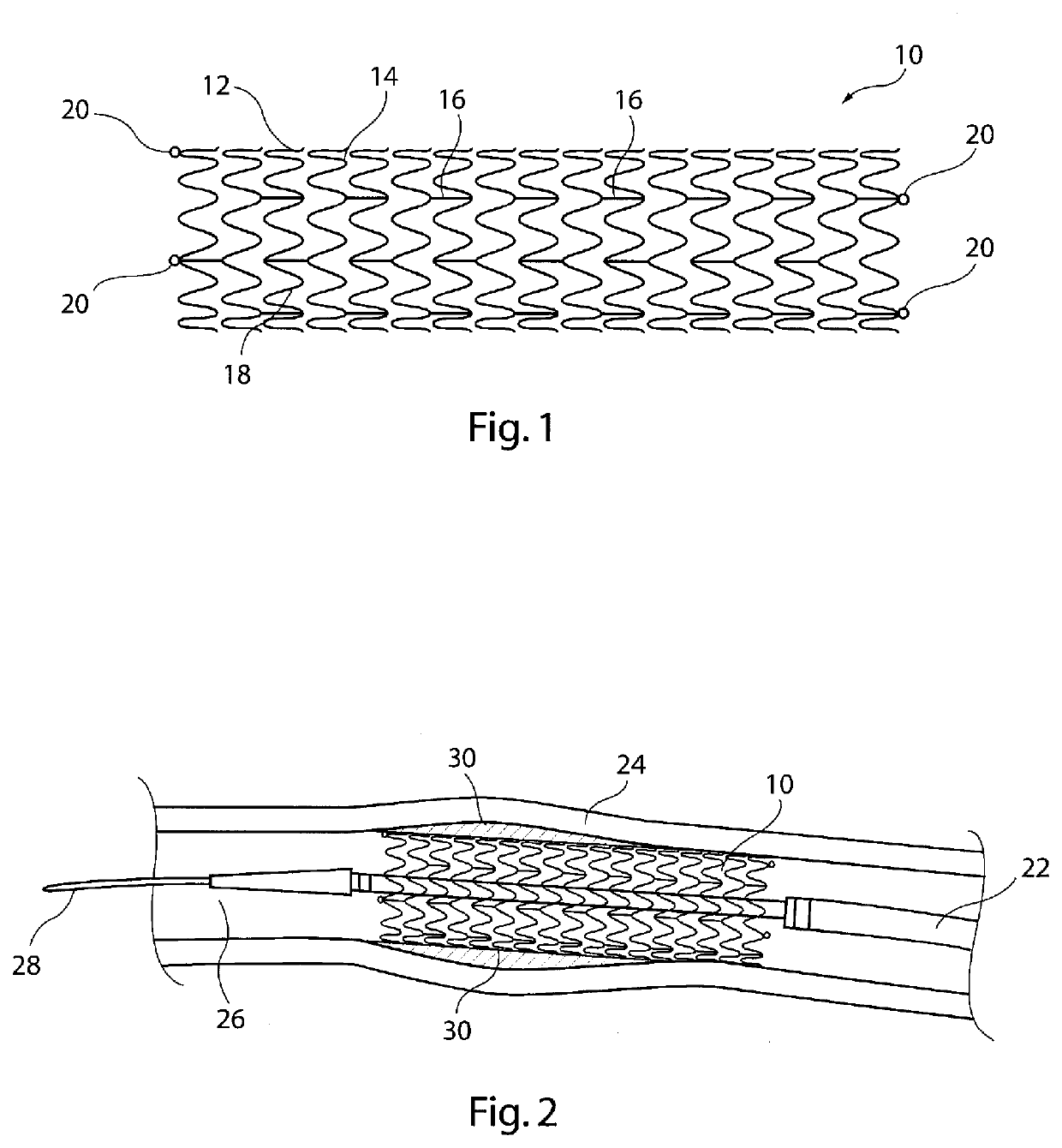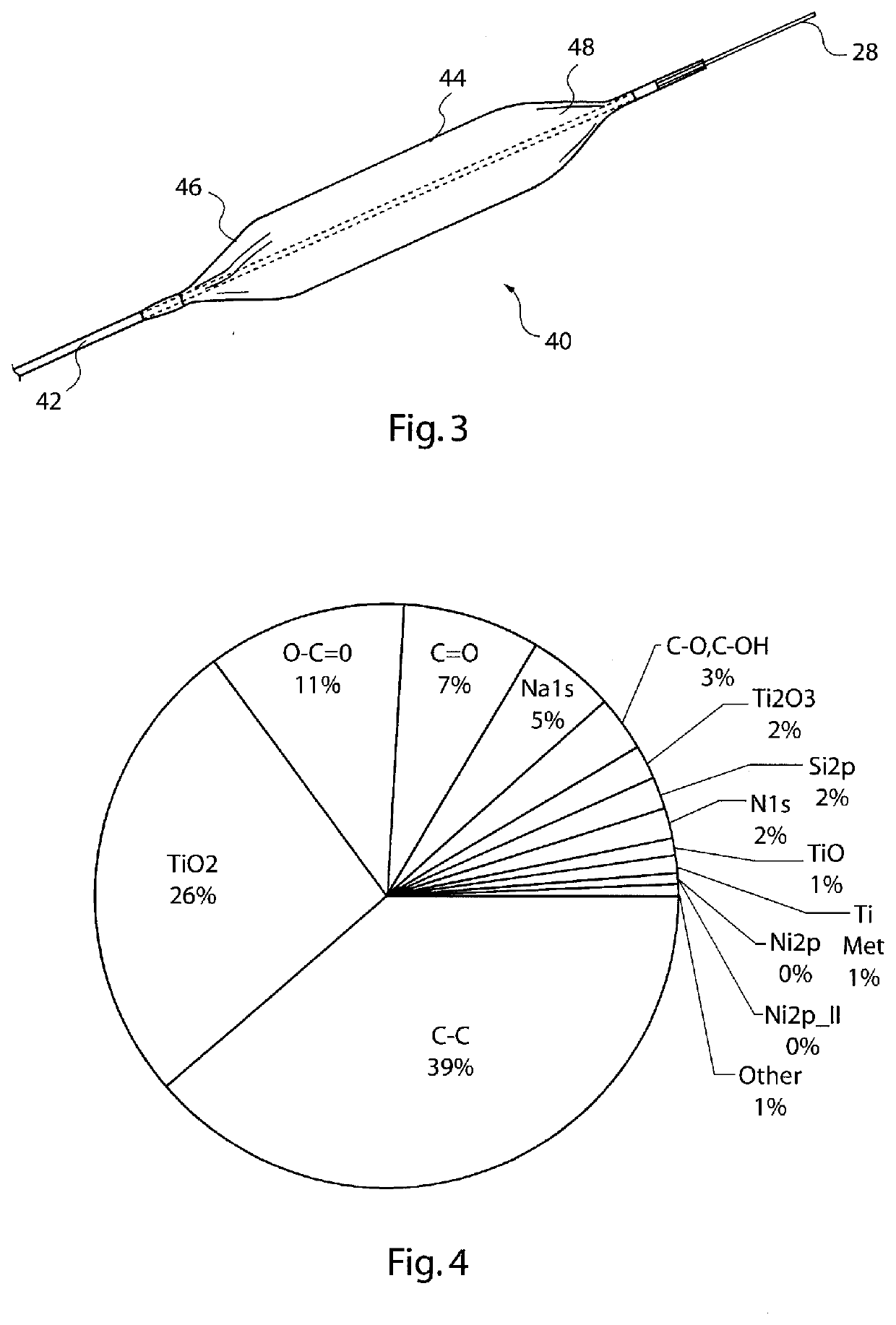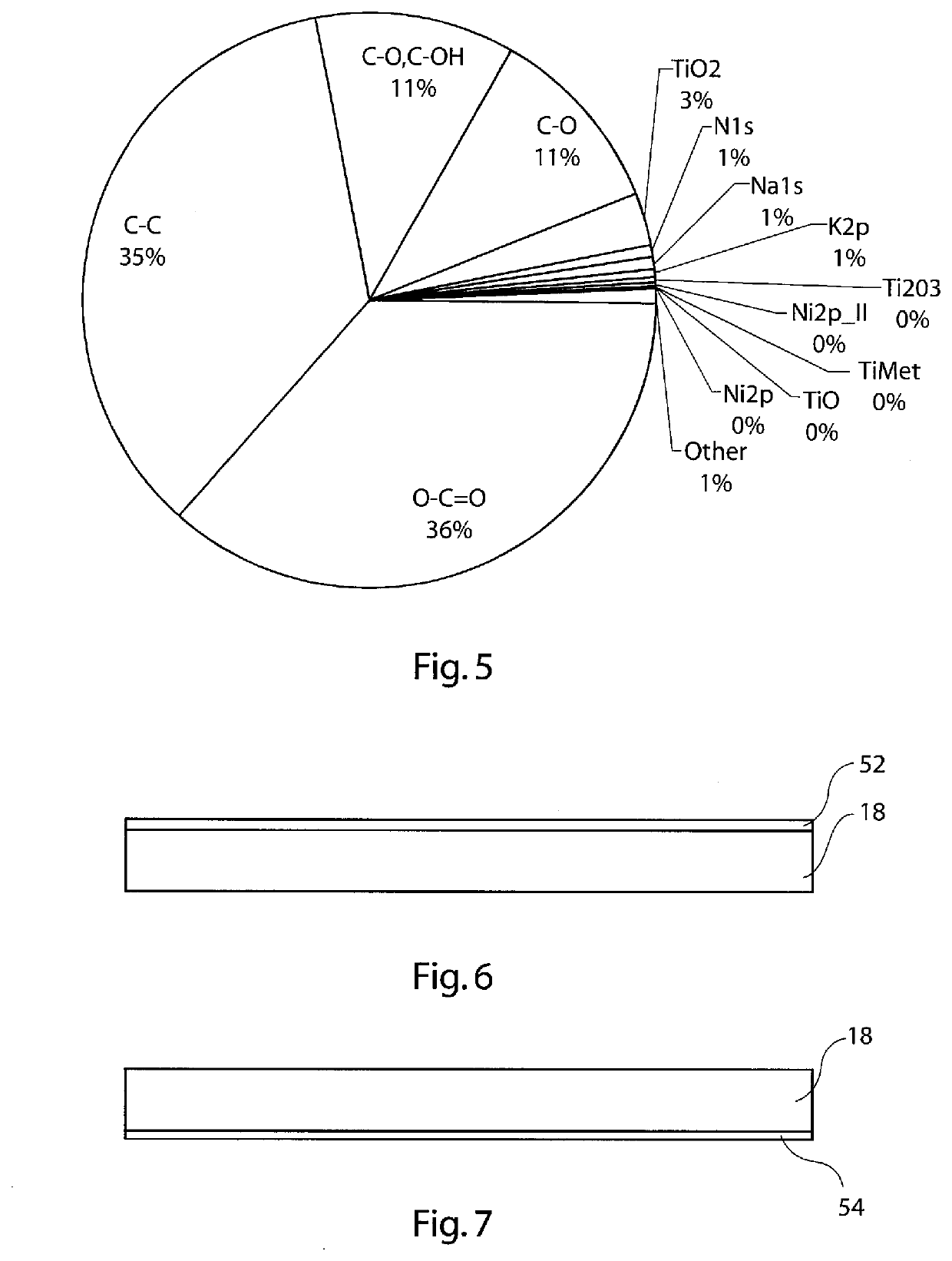Coated medical device and method of coating such a device
- Summary
- Abstract
- Description
- Claims
- Application Information
AI Technical Summary
Benefits of technology
Problems solved by technology
Method used
Image
Examples
example 1
EANING
[0100]Suitable plasma machines include the Gatan Solarus Model 950 and Diener Femto type B. An example of an appropriate plasma cleaning treatment, for an H2 O2 plasma, has the following characteristics:
[0101]Frequency: 13.56 MHz
[0102]Power Used: 90 W
[0103]Pressure: Maintained at 0.4 mbar with water vapour during the run (no other gas required)
[0104]Purging: The plasma chamber is gas purged and gas ventilated after the cleaning cycle using nitrogen
[0105]Cycle Time: 5 minutes
[0106]Plasma pre-treatment results in the generation of an even greater extent of functionalised carbon bond species at the contact surface of the medical device during the process of acidification, as can be seen in FIG. 5. The amount of titanium dioxide at the contact surface is substantially reduced compared to the case of functionalisation only (FIG. 4). The predominant acidic species of the contact surface are, in this example: O—C═O, C—O, C—OH and C═O. These species provide an acid polar element to th...
example 2
LEANING
[0107]The inventors has discovered that in place of plasma cleaning, the medical devices can be cleaned by caustic cleaning. In one example, this can be by means of caustic soda, although other caustic cleaning agents may be used in other embodiments.
[0108]In this example, the stent were cleaned by the following method:
[0109]1) preparation of caustic medium by dissolving 0.1 grams of sodium hydroxide (NaOH) in 100 millilitres of water. The medium had a pH of around 12.5 once stent for coating had been placed into the cleaning medium;
[0110]2) leave stent to soak for 30 minutes;
[0111]3) rinse the stent in water preferably multiple times (for example ten times) post soaking. After rinsing, the stent was found to have a pH of around 7; and
[0112]4) transfer stent directly to coating station without drying.
example 3
Y SPRAYING
[0113]In this example, the stent was coated with a layer of citric acid by the following method:
[0114]1) the stent was held vertically in front of a spray gun;
[0115]2) the spray gun was positioned with the nozzle aligned with the radial centre of the stent;
[0116]3) the stent was rotated three full turns per spray pass;
[0117]4the spray gun was operated for a total of 6 passes;
[0118]5) depending on the length of the stent and reach of the spray, the spray nozzle also moved along the longitudinal axis of the stent. In this example, the spray gun was moved at a speed of 1500 mm / min along the length of the stent;
[0119]6) the spray gun was operated at an atomisation and fan pressure both of 50 PSI;
[0120]7) citric acid in solution was dispensed from the spray gun at a rate of 0.25 ml / min;
[0121]8) citric acid solution used was: ACS reagent≥99.5%, mix 1 g in 100 ml of water;
[0122]9) after coating, the coating was dried.
[0123]It is preferred that the coating is dried after every spr...
PUM
| Property | Measurement | Unit |
|---|---|---|
| Fraction | aaaaa | aaaaa |
| Fraction | aaaaa | aaaaa |
| Fraction | aaaaa | aaaaa |
Abstract
Description
Claims
Application Information
 Login to View More
Login to View More - R&D
- Intellectual Property
- Life Sciences
- Materials
- Tech Scout
- Unparalleled Data Quality
- Higher Quality Content
- 60% Fewer Hallucinations
Browse by: Latest US Patents, China's latest patents, Technical Efficacy Thesaurus, Application Domain, Technology Topic, Popular Technical Reports.
© 2025 PatSnap. All rights reserved.Legal|Privacy policy|Modern Slavery Act Transparency Statement|Sitemap|About US| Contact US: help@patsnap.com



